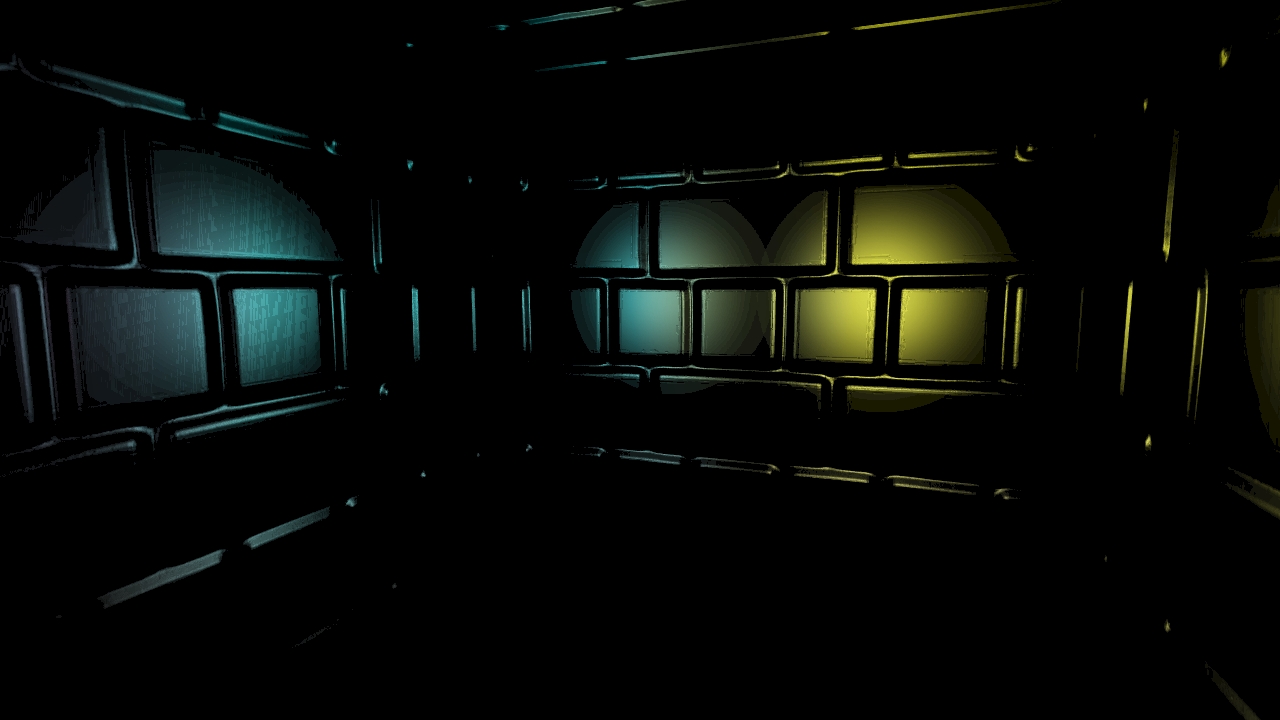Background:
Okay, I have been trying to write a deferred lighting renderer in OpenGL 2.0, in an attempt to get deferred shading with far less VRAM usage. Recently, I've reached the point where I have only RGBA8 targets, no MRT, and using native depth data for position recovery.
For the depth, I do an FBO Blit from the prepass FBO with a renderbuffer, to an FBO with a depth texture. Then in my lighting shader I convert the depth samples to linear eye depth using the following code:
// CPP
scale = 1.0f / (1.0f - zNear / zFar);
zParams.x = zNear * scale * (1.0 / zFar);
zParams.y = scale;
// Cg
depth = TEX2DLOD(depthBuffer, screenPosition).r;
depth = zParams.x / (zParams.y - depth);
From this, I just use the eye depth for the Crysis position recovery trick, and perform all my lighting calculations in view-space.
Problem:
The problem I encountered recently is that my specular lighting has a really nasty flickering/diagonal line artifact as the camera/objects move:


My ultimate question is whether or not anyone else has encountered similar problems when using native depth data the same way? Is there a way to eliminate or minimize these unsightly artifacts? Any help would be most appreciated. ;)
Further Info
I strongly suspect that the origin of the problem is the low-precision depth buffer, since I encountered similar issues when trying to store the raw linear eye depth in an RGBA8 RT with bit-packing. I've also observed that the visual artifact takes a banding appearance that follows the bands in the eye depth buffer.
[Edited by - n00body on October 24, 2009 7:00:05 PM]

 My ultimate question is whether or not anyone else has encountered similar problems when using native depth data the same way? Is there a way to eliminate or minimize these unsightly artifacts? Any help would be most appreciated. ;)
Further Info
I strongly suspect that the origin of the problem is the low-precision depth buffer, since I encountered similar issues when trying to store the raw linear eye depth in an RGBA8 RT with bit-packing. I've also observed that the visual artifact takes a banding appearance that follows the bands in the eye depth buffer.
[Edited by - n00body on October 24, 2009 7:00:05 PM]
My ultimate question is whether or not anyone else has encountered similar problems when using native depth data the same way? Is there a way to eliminate or minimize these unsightly artifacts? Any help would be most appreciated. ;)
Further Info
I strongly suspect that the origin of the problem is the low-precision depth buffer, since I encountered similar issues when trying to store the raw linear eye depth in an RGBA8 RT with bit-packing. I've also observed that the visual artifact takes a banding appearance that follows the bands in the eye depth buffer.
[Edited by - n00body on October 24, 2009 7:00:05 PM]





